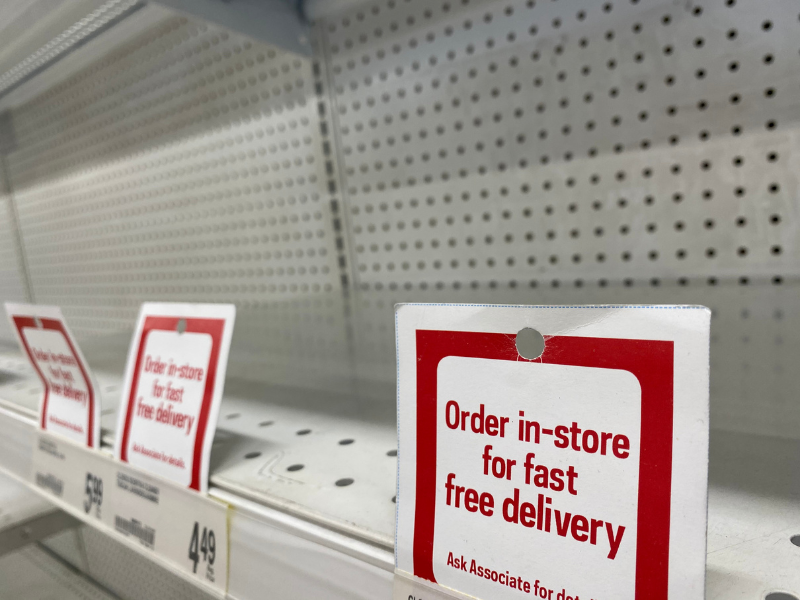Operational warehousing represents a key mechanism to adapt facilities for shifting customer demand patterns which ensures process efficiency and satisfied client requirements. The moving demand patterns of warehouse operations creates multiple unique challenges.
Different Challenges
Inventory Management and Stockouts/Overstocking

Changes in market demand create challenges for inventory control because companies must handle inadequate stock while simultaneously managing excess inventory. When stock runs out customers get upset due to lost business and the practice of stocking too much causes expense and capital wastage aside from raising the possibility of waste and expense for storage.
Labor Management and Staffing
Dynamic labor management proves challenging for inconsistent demand patterns thus businesses often choose to work with either insufficient staff members during peaks or extra staff for off-peak times. A shortage of staff leads shipping and order processing to take longer yet adding too many employees burdens the labor expenses.
Space Utilization and Warehouse Layout
Optimizing warehouse space turns into a challenging task because of uncertain demand patterns especially when peak periods increase storage needs. Improper space arrangement across facilities creates obstacles that cause delays and expenses rise.
Order Fulfillment and Shipping
Higher order volume in peak periods creates conditions that tax fulfillment operations which results in processing delays and errors. Order fulfillment delays have a negative impact on product satisfaction followed by reduced customer purchasing.
Implementing Flexible Warehouse Infrastructure
Adjustable Storage Systems

Businesses must create warehouse infrastructure that allows fast changes in response to demand variations for effective management. Businesses that install adjustable shelving combined with modular storage and mezzanines achieve maximum space usage in their facilities.
On-Demand Warehousing
A system of flexible warehousing enables companies to temporary access storage facilities without covering costs for extended terms or large expenditures. The ability to respond and manage inventory becomes more efficient through this adaptable setup. On-demand warehousing offers flexible and cost-effective storage solutions that allow businesses to quickly adapt to changing market demands.
Strategic Workforce Management
Temporary Staffing Solutions
Organizations who create effective workforce plans get enough trained staff to operate during busy times. The solution consists of using temporary employees or hiring staffing agencies to increase available workforce during times of high demand.
Cross-Training Employees
The training of staff members across various warehouse responsibilities creates operational flexibility which allows them to manage distinct operational duties smoothly. The warehouse operation remains efficient even during busy times because trained personnel with the right skills maintain ongoing operations.
Collaborative Supplier Relationships
Strategic relationships between suppliers and customers deliver crucial assistance to warehouse operations during periods of changing customer demand levels. Organization success in maintaining supplier communication ensures the warehouse obtains inventory in the right amounts at suitable times.
Leveraging Technology for Demand Responsiveness
Warehouse Management Systems
Through Warehouse Management Systems (WMS) organizations process variable demand patterns by using data analytical tools together with demand prediction technologies and tracking solutions to enhance inventory management along with operational efficiencies and fulfill orders promptly which boosts operational excellence along with client satisfaction.
Automation and Robotics
Automation and robotics can help businesses manage fluctuating demand by increasing scalability, improving efficiency, and reducing reliance on labor, allowing for faster adaptation to market changes and peak periods.
Smart Warehousing for a Changing Market

Proper warehouse management strategies serve as the critical factor which determines business success or failure when companies maintain changing market demands. Businesses that unite flexible storage solutions with on-demand warehousing gain peak performance on space use and cost reduction across market peaks and valleys. Proper workforce planning elements enhance the process of optimization. Operations maintenance maintains stability across workload shifts because business organizations both alter staff numbers and educate workers to perform several tasks.
Strategic technology adoption stands crucial for businesses to hold their market position. Having a well-designed Warehouse Management System (WMS) enables real-time inventory monitoring that stops shortages and increases delivery performance. Automation and robotics grant faster processes that minimize human errors to deliver operational efficiency even when demand increases.
A versatile warehouse system represents an essential business element which helps companies maintain operational efficiency in reaction to market demand changes. Organizations that combine high operational efficiency with cost savings and customer satisfaction by adjusting their flexible operations and advanced technology investments and strong supplier connections can handle all market demand changes.

